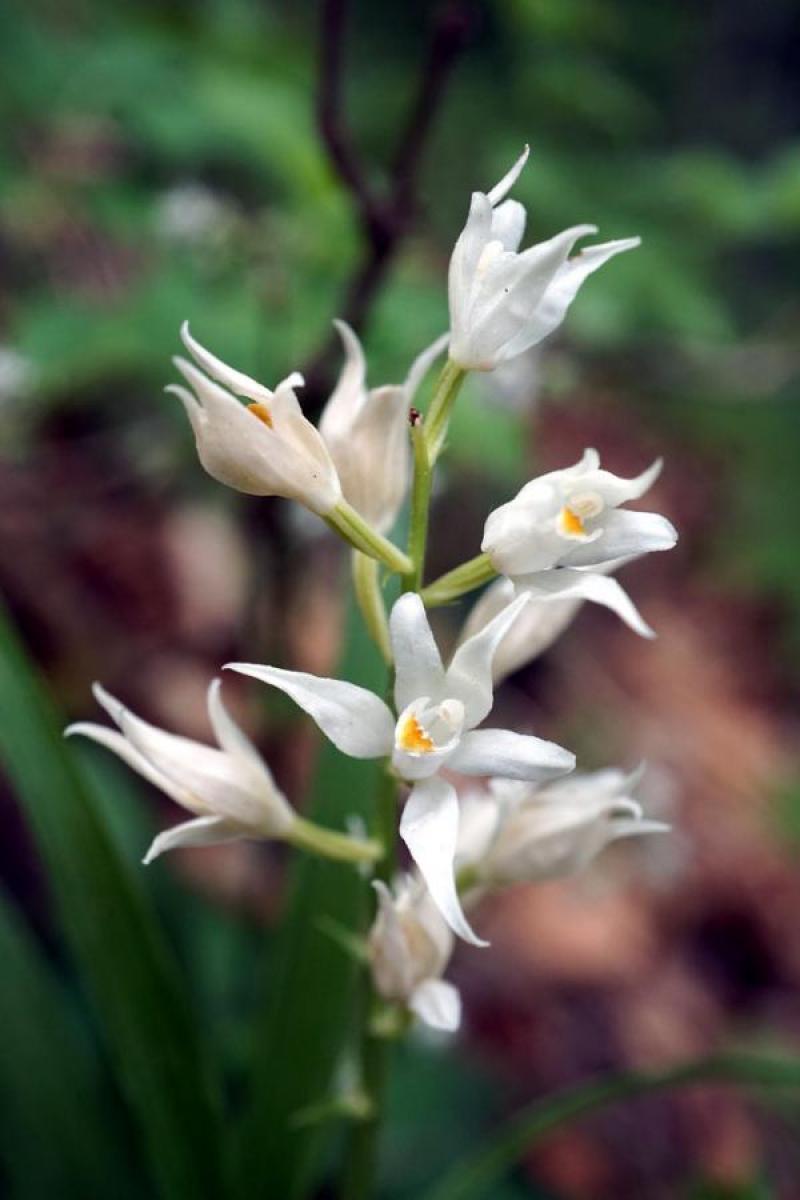Cephalanthera longifolia
Also known as: Little White Woodbird or Serapias pallida Serapias alba Serapias ensifolia Serapias lonchophyllum Serapias nivea Serapias xiphophyllum Serapias helleborine var. longifolia Serapias grandiflora var. ensifolia Serapias grandiflora Serapias grandiflora ssp. ensifolia Cephalanthera longifolia ssp. longifolia Epipactis grandiflora Cephalanthera lonchophylla Cephalanthera taiwaniana Cephalanthera thomsonii Cephalanthera longifolia f. angustifolia Cephalanthera grandiflora Cephalanthera longifolia f. pilosa Cephalanthera longifolia ssp. conferta Cephalanthera shizuoi Cephalanthera elegans Cymbidium xiphophyllum Cephalanthera longifolia f. latifolia Cephalanthera longifolia var. rosea Cephalanthera maravignae Cephalanthera ensifolia Cephalanthera angustifolia Cephalanthera longifolia f. pumila Cephalanthera longifolia f. longibracteata Cephalanthera longifolia var. gibbosa Cephalanthera longifolia var. latifolia Cephalanthera ensifolia var. maravignae Cephalanthera ensifolia var. cesari-gonzalezii Epipactis longifolia var. gibbosa Epipactis longifolia var. longibracteata Cephalanthera conferta Epipactis longifolia var. pilosa Cephalanthera xiphophyllum Cephalanthera xiphophyllum var. latifolia Cephalanthera pallens Cephalanthera alpicola var. shizuoi Cephalanthera alpicola Cephalanthera mairei Cephalanthera erecta var. shizuoi Cephalanthera ensifolia var. acuminata Epipactis grandifolia Epipactis xiphophylla Epipactis pallida Epipactis pallens Limodorum acuminatum Epipactis ensifolia Narrow Leaved Helleborine White Lady Sword-leaved Helleborine in the subfamily: Epidendroideae
Native to: Afghanistan Algeria Belgium Bhutan Bulgaria China Corsica - France Cyprus Denmark Germany Greece Hungary Ireland Israel Jordan Lebanon Netherlands Norway Pakistan Poland Portugal Romania Sardinia - Italy Spain Switzerland Tunisia Turkey Ukraine Uzbekistan
General Information
Little White Woodbird is a medium sized cold to cool growing terrestrial orchid belonging to the sub family Epidendroideae native to Afghanistan, Algeria, Belgium, Bhutan, Bulgaria, China, France, Cyprus, Denmark, Germany, Greece, Hungary, Ireland, Israel, Jordan, Lebanon, Netherlands, Norway, Pakistan, Poland, Portugal, Romania, Italy, Spain, Switzerland, Tunisia, Turkey, Ukraine, and Uzbekistan.
Plant Description
Each new growth has numerous erect lance shaped leaves
Flowers
Numerous blossoms appear during Summer and Spring
Blooming Season
- Spring
- Summer
Substrate(s)
- Sand
Care Notes
These orchids grow on the forest floor so are used to rich soil containing plenty of organic matter that is always moist (but not always wet), and prefer constant conditions in terms of humidity, temperature and water supply. They may not be as forgiving as epiphytes in regards to sudden changes in growing conditions so it is wise to ease them into new conditions over a the space of a few days, and repot as infrequently as possible.
Keep an eye on the plants condition regularly as they can decline suddenly if the conditions are not just right. It is more important to keep water supply constant rather than frequent - overwatering often causes rot which can quickly set in, especially in warmer conditions.
These can be grown in shady, moist areas in the garden, supplied they have protection from abrupt changes caused by the elements, e.g. dry winds, frost etc. Being grown around companion plants such as ferns and bromeliads will help build and retain the humidity they require throughout the year.
Climate
Grows at high elevations.
Fertiliser
These plants do well with slow release fertiliser at the rate of 2-3 pellets per cup (250ml) of media. Additional fertiliser during the growth period may be beneficial, but not necessary.
Potting
These plants can be sensitive to repotting though should not require repotting regularly. Repotting should be done when the mix has broken down to the point that it doesn't absorb water or holds onto water for far too long, usually the plant shows a decline in growth as well. Repotting is best done after the growing season when the plant has died back.
The mix should be free draining, with a blend of 30% inorganic ingredients such as coarse sand, gravel or perlite, mixed in with about 70% organic ingredients such as peat, leaf litter or decomposed bark. Avoid commercial potting mixes as they can vary wildly and may contain "wetting agents" that can hold onto water for loo long, causing rotting and stunted growth.

















